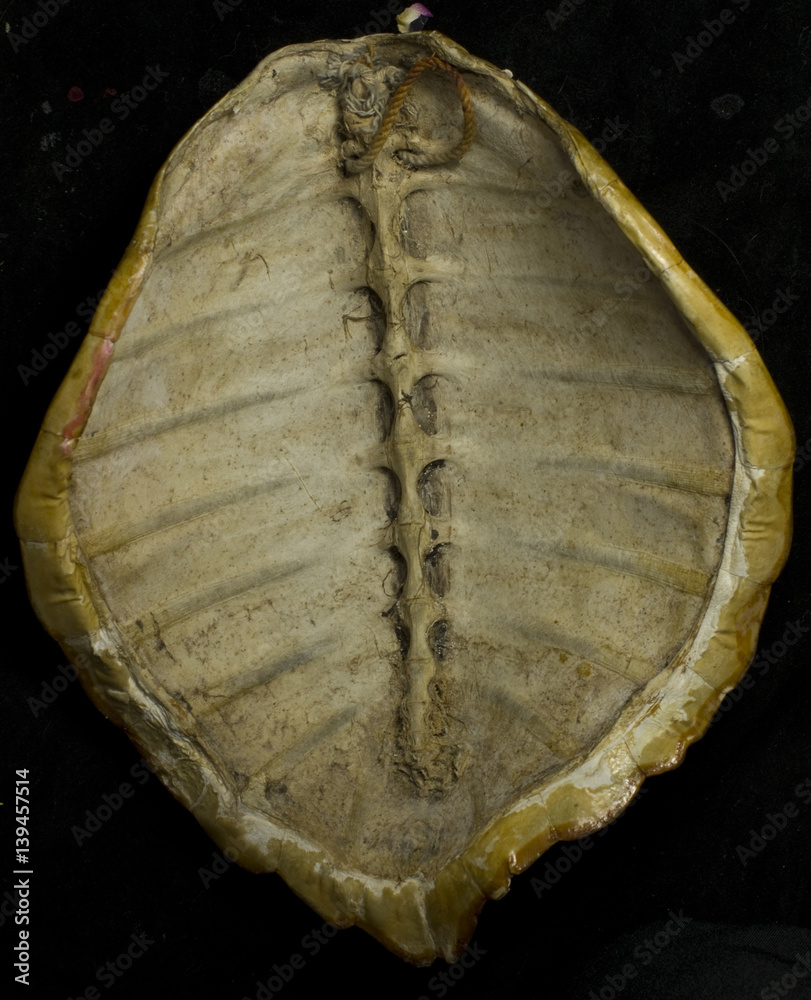Have you ever looked at a turtle and wondered how it manages to carry its home on its back? It’s an incredible feat of evolution, but something even more fascinating lies in the comparison between a turtle’s shell and a human’s rib cage. While they might seem vastly different at first glance, a closer look reveals a striking similarity in their fundamental structure and purpose.

Image: stock.adobe.com
The intricate relationship between these seemingly disparate elements goes beyond just physical resemblance. It sparks a deeper understanding of the evolutionary patterns that shaped life on Earth. Understanding this connection not only reveals the elegance of nature’s design but also provides a new perspective on the resilience and adaptability of living organisms.
The Turtle’s Protective Shell: A Marvel of Evolution
Imagine a bony armor that not only protects but also grows along with its owner. The turtle’s shell is a testament to this remarkable feat. This protective structure is actually a modified part of the turtle’s skeleton, seamlessly integrated into its body.
The primary skeletal component of the shell, known as the carapace, develops from the turtle’s ribs. These ribs broaden and fuse together, forming a solid, rigid shield that covers the turtle’s back. The plastron, the bottom part of the shell, arises from the turtle’s breastbone and collarbone, forming a strong protective plate for the belly.
The Human Rib Cage: A Framework for Vital Organs
The human rib cage, while distinctly different in its complexity and overall form, mirrors the turtle’s shell in its fundamental function—protection. The rib cage, composed of 12 pairs of ribs, encircles the vital organs of the chest, providing a secure framework for the heart, lungs, and major blood vessels.
These ribs, attached to the spine at the back and connected to the sternum (breastbone) at the front, create a resilient cage that shields these sensitive organs from external forces. The human rib cage also serves as an attachment point for numerous muscles, contributing to the mechanics of breathing and movement.
Unveiling the Evolutionary Thread
Though seemingly separate, the turtle’s shell and the human rib cage reveal a striking evolutionary connection—a shared blueprint of survival. Both owe their development to the need for protection, demonstrating how natural selection shapes the form and function of structures essential for life.
Early reptiles, ancestors to both modern turtles and humans, likely possessed rib structures similar to what we see in lizards today. In turtles, these rib structures evolved, becoming broadened and fused over millions of years. This process transformed their ribs into the distinctive shell we know today.
Meanwhile, in the human lineage, the ribs retained their basic structure, adapting to serve the needs of bipedal locomotion and more complex respiratory functions.
Image: turtleowner.com
Beyond the Skeleton: Shared Strategies for Survival
The connection between turtle shells and human ribs extends beyond just their skeletal origins. Both demonstrate the adaptability of living organisms in response to evolutionary pressures. Turtles, with their immobile shells, have evolved other strategies to survive. They are known for their ability to withdraw their limbs and head inside their protective shell, providing an impenetrable barrier against predators.
Humans, on the other hand, have adapted to rely on their flexible rib cage for different strategies. The elasticity of the rib cage plays a crucial role in breathing. It expands and contracts, enabling the lungs to draw in oxygen and expel carbon dioxide.
A Turtle’S Shell Is A Human’S Ribs
The Intriguing Tale of Adaptation
The unique relationship between the turtle’s shell and the human rib cage is a powerful testament to the intricate tapestry of life on Earth. It underscores the captivating story of adaptation, where seemingly disparate structures share a common evolutionary origin, reflecting the remarkable diversity and resilience of life.
The next time you see a turtle, remember that you’re looking at a creature that carries its ribs on its back, a reminder of the extraordinary journey of life and the intricate connections that bind us all.






